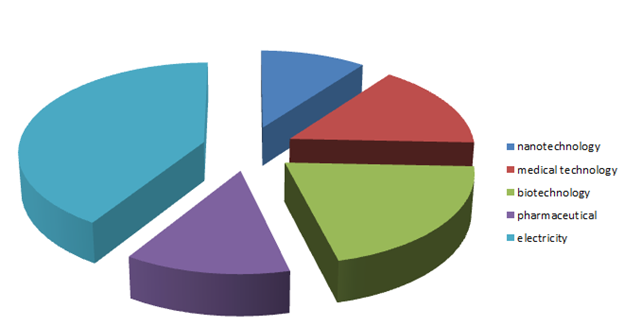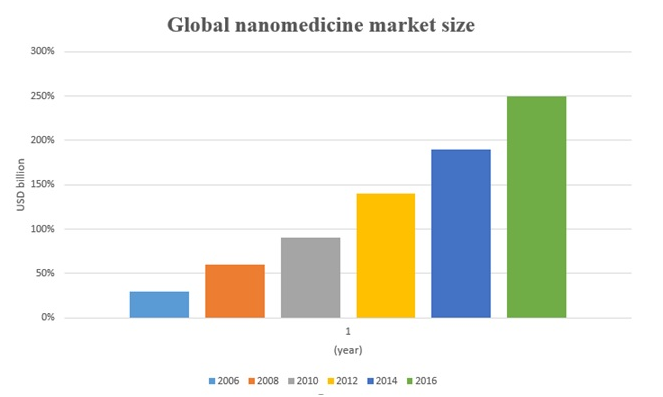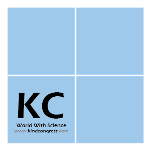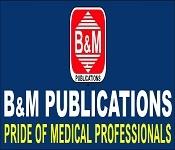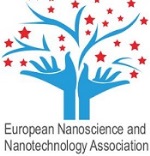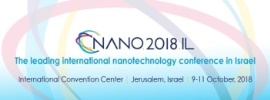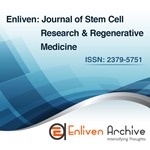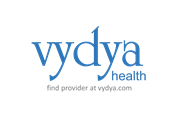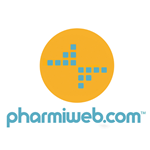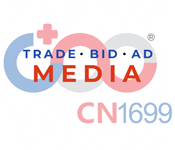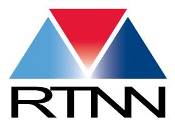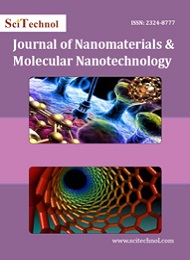Theme: Role of Nanotechnology in Human’s Life
Nanomedicine Meet 2019
ME Conferences invites all the participants from all over the world to attend “Nanomedicine and Nanotechnology in Health Care” during May, 27-28, 2019 at Istanbul,Turkey. This includes prompt keynote presentations, Oral talks, Poster presentations and Exhibitions. And it provides an opportunity to learn about the complexity of the Diseases, discuss interventional procedures, look at new and advances in Nanotechnology and their efficiency and efficacy in diagnosing and treating various diseases and also in Healthcare treatments.
ME Conferences organizes 1000+ Global Events Every Year across USA, Europe & Asia with support from 1000 more scientific societies and Publishes 700+ Open access journals which contains over 1,00,000 eminent personalities, reputed scientists as editorial board and organizing committee members. ME Conferences journals have over 5 million readers and the fame and success of the same can be attributed to the strong editorial board which contains over 30000 eminent personalities and the rapid, quality and quick review processing.ME Conferences make the perfect platform for global networking as it brings together renowned speakers and scientists across the globe to a most exciting and memorable scientific event filled with much enlightening interactive sessions, international workshops, world class international exhibitions and poster presentations.
Why to attend?
This Conference ”Nanomedicinemeet 2018” will focus on Healthcare and Medicine. World-renowned speakers, the most recent techniques, tactics, and the newest updates in fields Nanotechnology and Engineering, Medical Nanotechnology, Tissue Engineering are hallmarks of this conference. Nanomedicinemeet-2018 is an exciting opportunity to showcase the modern technology, the new products of your company, and/or the service your industry may offer to a broad international audience. It covers a lot of topics and it will be a nice platform to showcase their recent researches on Nanotechnology, Material Science and other interesting topics.
Target Audience:
- Scientists
- Professors
- Research Scholars and students
- Nanotechnology Companies
- Nanotechnology Associations
- Materials Science and Nanotechnology Engineers
- Materials Scientists/Research Professors
- Physicists/Chemists
- Junior/Senior research fellows of Materials Science/ Nanotechnology/ Polymer Science/
- Biotechnology
- Materials Science Students
- Directors of chemical companies
- Materials Engineers
- Members of different Materials science associations
- Polymer companies
Track 1: Nanomedicine
The term Nano medicine encompasses a broad range of technologies and materials. Types of nanomaterials that have been investigated for use as drugs,, drug carriers or other Nonmedical agents. There has been steep growth in development of devices that integrate nanomaterials or other nanotechnology. The nanotechnology-based medical devices market is categorized into three major segments, namely, therapeutic applications, diagnostics applications, and research applications. Rising incidence of lifestyle and age-related disorders (such as cardiovascular and hearing disorders) has contributed significantly to the growth of the nanotechnology-based active implantable devices market. Nanotechnology, or systems/device manufacture at the molecular level, is a multidisciplinary scientific field undergoing explosive development. The genesis of nanotechnology can be traced to the promise of revolutionary advances across medicine, communications and genomics. On the surface, miniaturization provides cost effective and more rapidly functioning biological components. Less obvious though is the fact that Nanometer sized objects also possess remarkable self-ordering and assembly behaviors under the control of forces quite different from macro objects.
Track 2: Nanorobots in Medicine
Advances in technology have increased our ability to manipulate the world around us . Nanotechnology is rapidly emerging within the realm of medicine. Nanomedicine is the process of diagnosing, treating, and preventing disease and traumatic injury, of relieving pain, and of preserving and improving human health, using molecular tools and molecular knowledge of the human body. An exciting and promising area of Nano technological development is the building of Nanorobots. Highly precise positioning techniques are required in Miniaturing in chip technology, optics , micro mechanic, medicine , gene and biotechnology. The new manipulation technology is the desire to enter the micro and Nano world not only by viewing but also acting, altering micro and Nanosized objects . Nanorobots plays a critical roles for many applications in the human body, such as targeting tumoral lesions for therapeutic purposes, miniaturization of the power source with an effective onboard controllable propulsion and steering system have prevented the implementation of such mobile robots.
Track 3: Nanoparticles in Photodynamic Therapy
The therapeutic properties of light have been known for thousands of years, but it was only in the last century that photodynamic therapy (PDT) was developed. It is an emerging modality for the treatment of a variety of diseases that require the killing of pathological cells (e.g. cancer cells or infectious micro-organisms) or the removal of unwanted tissue (e.g. neovascularization in the choroid or atherosclerotic plaques in the arteries). It is based on the excitation of nontoxic photosensitizers. Photodynamic therapy (PDT) uses the combination of dyes with visible light to produce reactive oxygen species and kill bacteria and destroy unwanted tissue. Nanotechnology plays a great role in solubilizing the photosensitizers, metal nanoparticles can carry out Plasmon resonance enhancement, and fullerenes can act as photosensitizers, themselves.
Track 4: Importance of Nanotechnology in Biosensors
Nanotechnology is becoming increasingly important for the several sectors. Promising results and applications are already being developed in the areas of nutrient delivery systems through bioactive Nano encapsulation, biosensors to detect and quantify pathogens organic compounds. The sensitivity and performance of biosensors is being improved by using nanomaterials for their construction. The use of these nanomaterials has allowed the introduction of many new signal transduction technologies in biosensors. Many scientists have involved themselves to know the application and the benefits of nanotechnology in different areas of food industry that include bioactive Nano encapsulation, edible thin film, packages and Nano sensors.
Track 5: Green Nanoscience
Green chemistry and Nano science are both emerging fields that take advantage of molecular-level designing and have enormous potential for advancing our science. Nano science is the study of materials that are on the length-scale of 100 nanometers or smaller and have properties that are dependent on their physical size. The principles of green chemistry can guide responsible development of Nano science, while the new strategies of Nano science can fuel the development of greener products and processes. Phytochemicals occluded in tea have been extensively used as dietary supplements and as natural pharmaceuticals in the treatment The parallel development of green chemistry and Nano science and the potential synergy of the two fields can lead to more successful and profitable technologies with reduced environmental impacts and improved conservation of resources. In recent years, green synthesis of metal nanoparticles is an interesting issue of the nanoscience.
Track 6: Nanotechnology in Biology
Nanotechnology is enabling technology that deals with Nano-meter sized objects. It is expected that nanotechnology will be developed at several levels: materials, devices and systems. The combination of biology and nanotechnology has led to a new generation of Nano devices that opens the possibility to characterize the chemical, physical, mechanical, and other molecular properties. And it can be even used to characterize the single molecules or cells at extraordinarily high throughput. Nanoparticles with distinctive chemical compositions, sizes, shapes, and surface chemistries can be engineered easily and this technique has wide range of applications in biological systems. Utility of nanotechnology to biomedical sciences imply creation of materials and devices designed to interaction in sub-cellular scales with a high degree of specificity.
Track 7: Organic Nanoparticles
Biopolymer nanoparticles are offering numerous advantages which embrace the simplicity of their preparation from well-understood biodegradable, biocompatible polymers and their high stability in biological fluids during storage. Since the emergence of Nanotechnology in the past decades, the development and design of organic and bioorganic nanomaterials has become an important field of research. And several types of polymers have been tested and are used in drug delivery systems; including nanoparticles, dendrimers, capsosomes and micelles. Researchers have found, the synthesized polymers even serves as a good carrier and plays a vital role in carrying a drug. And in other hand they are used in food industries too for food package purposes. There are thousands of organic chemicals are in present in various pharmaceutical to consumer product and are being used in dyes, flavoring agents. It can be explained in organic compounds ranging in diameter from 10 to 1μm. Ultrafine particles are the same as nanoparticles and between 1 and 100 nanometers in size, fine particles are sized between 100 and 2,500 nanometers, and coarse particles cover a range between 2,500 and 10,000 nanometers.
Track 8: Biological Synthesis of Nanoparticles
The biological synthesis of nanoparticles is synthesis method through which we can control, size and shape of nanoparticles and it increasingly regarded as a rapid, ecofriendly, and easily scaled-up technology. Over the past few years researches have shown their interest in metallic nanoparticles and their synthesis has greatly increased. However, drawbacks such as the involvement of toxic chemicals and the high-energy requirements of production. Synthesizing living organisms such as bacteria, fungi and plants is an alternative way to overcome the drawbacks. Plant mediated synthesis of nanoparticles is the green chemistry that connects. Generally, metal nanoparticles are synthesized and stabilized by using physical and chemical: the chemical approach, such as chemical reduction, electrochemical techniques , photochemical reactions in reverse micelles. There is a growing attention to biosynthesis the metal nanoparticles using organisms. Among these organisms, plants seem to be the best candidate and they are suitable for large scale biosynthesis of nanoparticles.
Track 9: Nanotechnology Based Drug Delivery System
Nanoparticles used as drug delivery vehicles are generally below 100 nm , and are coated with different biodegradable materials such as natural or synthetic polymers (PEG,PVA,PLGA,etc.), lipids, or metals , it plays significant role on cancer treatment as well as it holds tremendous potential as an effective drug delivery system. A targeted drug delivery system (TDDS) is a system, which releases the drug in a controlled manner. Nanosystems with different compositions and biological properties have been extensively investigated for drug and gene delivery applications. To achieve efficient drug delivery it is important to understand the interactions of Nanomaterials with the biological environment, targeting cell-surface receptors, drug release, multiple drug administration, stability of therapeutic agents. Nanotechnology refers to structures roughly in the 1−100 nm size regime in at least one dimension. Despite this size restriction, nanotechnology commonly refers to structures that are up to several hundred nanometers in size and that are developed by top-down or bottom-up engineering of individual components.
Track 10: Nanosuspention Formulation
Nanosuspention formulation can be used to improve the solubility of the poorly soluble drugs. One of the major problems associated with poorly soluble drugs is very low bioavailability. The Preparation of Nanosuspentionis simple and applicable to all drugs which are water insoluble. It consists of the pure poorly water-soluble drug without any matrix material suspended in dispersion . Various techniques are used for the enhancement of the solubility of poorly soluble drugs which include physical and chemical modifications of drug and other methods like particle size reduction, crystal engineering, salt formation, solid dispersion, use of surfactant, complexation A range of parameters like solubility, stability at room temperature, compatibility with solvent, excipient, and photostability play a critical role in the successful formulation of drugs. Use of some drug which is potentially restricted because of its toxic side-effects and its poor solubility, making it unsuitable for intravenous use in patients with drug malabsorption.
Track 11: Tissue Engineering & Regenerative Medicine
Nano medicine drives the convergence of nanotechnology and medicine it is delineated as the application of nanotechnology in healthcare. The field of tissue engineering has developed in phases: initially researchers searched for “inert” biomaterials to act solely as replacement structures in the body. Tissue engineering is classified as an associate field of biomaterials and engineering. It focuses on the use of cellular and material-based therapies aimed at targeted tissue regeneration caused by traumatic, degenerative, and genetic disorders .It covers a broad range of applications, in practice the term has come to represent applications that repair or replace structural tissues (i.e., bone, cartilage, blood vessels, bladder, etc.). Today, these Nano scale technologies are coming to the forefront in medicine because of their biocompatibility, tissue-specificity, and integration and ability to act as therapeutic carriers.
Track 12: Polymeric Nanoparticles for Biomedical
Polymeric nanoparticles (NPs) are one of the most studied organic strategies for Nano medicine. Intense interest lies in the potential of polymeric NPs to revolutionize modern medicine. Polymeric NPs include drug delivery techniques such as conjugation and entrapment of drugs, prodrugs, stimuli-responsive systems, imaging modalities, and theranostics. The use of biodegradable polymeric nanoparticles (NPs) for controlled drug delivery has shown significant therapeutic potential. Concurrently, targeted delivery technologies are becoming increasingly important as a scientific area of investigation. Polymeric nanoparticles-based therapeutics show great promise in the treatment of a wide range of diseases, due to the flexibility in which their structures can be modified, with intricate definition over their compositions, structures and properties. Advances in polymerization chemistries and the application of reactive, efficient and orthogonal chemical modification reactions have enabled the engineering of multifunctional polymeric nanoparticles.
Track 13: Nanobubble in Nanomedicine
In recent years, microbubble and Nano bubble technologies have drawn great attention due to their wide applications in many fields of science and technology, such as water treatment, biomedical engineering, and nanomaterials. Nano bubbles exhibit unique characteristics; due to their minute size and high internal pressure, they can remain stable in water for prolonged periods of time. Nanobubbles can be created when gold nanoparticles are struck by short laser pulses. The short-lived bubbles are very bright and can be made smaller or larger by varying the power of the laser. Because they are visible under a microscope, nanobubbles can be used to either diagnose sick cells or to track the explosions that are destroying them.
Track 14: Natural Product Based Nanomedicine
Natural products have been used in medicine for many years. Many top-selling pharmaceuticals are natural compounds or their derivatives.. And plant- or microorganism-derived compounds have shown potential as therapeutic agents against cancer, microbial infection, inflammation, and other disease conditions. Natural products had huge success in the post-World War II era as antibiotics, and the two terms have become synonymous. While large pharmaceutical companies have favored screening synthetic compound libraries for drug discovery, small companies have started to explore natural products’ uses against cancer, microbial infection, inflammation, and other diseases. The incorporation of nanoparticles into a delivery system for natural products would be a major advance in the efforts to increase their therapeutic effects. Recently, advances have been made showing that nanoparticles can significantly increase the bioavailability of natural products both in vitro and in vivo.
Track 15: Nanotechnology in Food Science
Nanoscience and nanotechnology are new frontiers of this century and food nanotechnology is an emerging technology. Food technology is regarded as one of the industry sectors where nanotechnology will play an important role in the future. The development of new products and applications involving nanotechnologies holds great promise in different industrial sectors, Nanotechnology may revolutionize the food industry by providing stronger, high-barrier packaging materials, more potent antimicrobial agents. Several possibilities exist to exploit the benefits of nanotechnologies during different phases of the food chain with the aim to enhance animal nutrition and health. Several complex set of engineering and scientific challenges in the food and bioprocessing industries for manufacturing high quality and safe food through efficient and sustainable means can be solved through nanotechnology. Bacteria identification and food quality monitoring using biosensors; intelligent, active, and smart food packaging systems; and Nanoencapsulation of bioactive food compounds are few examples of emerging applications of nanotechnology for the food industry.
Track 16: Nanosurgery
The main current applications of Nanotechnology for surgeons are in the areas of development of surgical implants using Nanomaterials, Imaging, Drug Delivery and development of Tissue Engineering products, such as scaffolds with enhanced material–cell interaction. An example of this is the development of a scaffold for delivery of stem cells to replace defective retinal pigmented epithelial cells in age-related Macular Degeneration. In Dentistry research has been done, liposomal Nanoparticles that contained collagenase and performed tests with them in rats, and found compared to conventional surgery, collagenase weakened the collagen fibers, making it easier to shift the teeth afterward with braces.
Track 17: Toxicity of Nanoparticles
Nanoparticles with their unique size-dependent properties are at the forefront of advanced material engineering applications in several fields. Metals, non-metals, bio-ceramics, and many polymeric materials are used to produce nanoparticles of the respective materials. These are functional in producing liposomes, PEG and many more. Due to their small size nanoparticles has found to be interacting with human bodies same like of gases. Nanoparticles of the same composition can display behavioral differences when interacting with different environments. Nanoparticles can enter the human body via inhalation, ingestion, or skin contact. The range of pathologies related to exposure to nanoparticles encompasses respiratory and even several organs and leads to diseases. Accurate in vitro assessment of nanoparticle cytotoxicity requires a careful selection of the test systems. Due to high adsorption capacity and optical activity, engineered nanoparticles are highly potential in influencing classical cytotoxicity assays.
Track 18: Nanotechnology-Innovations in Medical Technology
One of the exciting features of nanotechnology is its utility in the field of Nano medicine, therapeutics, and medical devices . When these small size materials are introduced into biological systems, their extremely small size and their unique Nano scale properties make it possible to use them as delivery vectors and probes for biological diagnostics, bioimaging and therapeutics. In fact, when size decreases, the surface area to volume ratio of materials becomes very large, so that a vast suitable surface is available for chemical interactions with biomolecules. This critically implied that nanotechnology is facing a transition into the tangible advancement of human therapeutics. Recently, There are multiple clinical trials of nanomaterials have done; both for therapeutics and for medical devices.
Related conferences: Nanomedicine Conferences | Nanotechnology Events | Nano Healthcare Congress | Nanomedicine Meet | Nanoscience Event | Nanoengineering Conference | Tissue Engineering Meeting
25th World Congress on Nanomaterials and Nanotechnology, March 25-26, 2019 Yokohama, Japan
29th International Conference on Nanomaterials and Nanotechnology, April 25-26, 2019 Rome, Italy
3rd World Congress on Nano Science and NanoTechnology, May 13-14, 2019 Bangkok,Thailand
31st Annual Congress on Nanotechnology and Nanomaterials, May 15-16, 2019 | Prague, Czech Republic
International Conference on Nanomedicine and Nanotechnology in Health Care, May 27-28, 2019 Istanbul, Turkey
27th International Conference on Nanomedicine and Nanomaterials, May 27-28, 2019 Istanbul, Turkey
31st Nano Congress for Future Advancements, August 29-31, 2019 London, UK
22nd World Nanotechnology Congress, October 14-15, 2019 Abu Dhabi, UAE
Related Societies:
USA: International Organization of Materials, International Association of Nanotechnoogy, Graphene Stakeholders Association, Nano Science and Technology Institute (NSTI), NanoBusiness Commercialization Association, Alliance for Nanotechnology in Cancer, International association of nanotechnology, National Institute for Nanotechnology, Waterloo Institute for Nanotechnology, The Institute for Molecular Manufacturing (IMM), NanoBusiness Alliance, Nanotechnology and Nanoscience Student Association (NANSA), Nano Science and Technology Institute (NSTI), National Cancer Institute, National Nanotechnology Initiative, American Nano society, Metals and Minerals Societies, Society for Advancement of Material and process Engineering, American Composites Manufacturers Association, Brazilian Composites Materials Association, Canadian Biomaterials Society, American Institute of Aeronautics and Astronautics (AIAA).
Europe: International Union of Crystallography, European Nanoscience and Nanotechnology Association (ENNA), German Association of Nanotechnology, Nanotechnology Industries Association, The Institute of Nanotechnology (IoN), Nanotechnology Industries Association (NIA), Russian Society of Scanning Probe Microscopy and Nanotechnology, Society of Nanoscience and Nanotechnology, Federation of Materials Societies, Society for Biomaterials, Federation of European Materials Societies
Asia-Pacific & Middle East: Nano Technology Research Association (NTRA), Asian Nanoscience and Nanotechnology Association (ANNA), Nanoscience & Nanotechnology, ASPEN-Asian society of precision engineering and nanotechology, The International Association of Nanotechnology (IANT), Iran Nanotechnology Initiative Council (INIC), National Institutes of Health, Society of Materials Science, Japan Society for Composite Materials, Australasian Society for Biomaterials and Tissue Engineering, Australasian Ceramic Society, Materials Research Society, National Centre for Nanoscience and Technology.
Theme: Role of Nanotechnology in Human’s life
Summary:
The field of Nanotechnology has recently emerged as the most commercially viable technology of this century because of its wide-ranging applications in our daily lives. Man-made Nanostructured materials such as fullerenes, nanoparticles, Nano powders, Nanotubes, Nanowires, Nanorods, Nano-fibers, Quantum dots, Dendrimers, Nano clusters, Nanocrystals, and Nanocomposites are globally produced in large quantities due to their wide potential applications, e.g., in skincare and consumer products, healthcare, electronics, photonics, biotechnology, engineering products, Pharmaceuticals, drug delivery, and agriculture. Many emerging economies such as Brazil, China, India, Iran, UAE, Malaysia, Mexico, Singapore and South Africa have ambitious research and development (R&D) plans for Nanotechnology. A group of scientists who have mapped out the uses of Nanotechnology and the needs of global health argue that Nano medicine is relevant for the developing world. They surveyed researchers worldwide and concluded that Nanotechnology could greatly contribute to meeting the Millennium Development Goals for health.
Importance and scope:
Nanotechnology is becoming a crucial driving force behind innovation in medicine and healthcare, with a range of advances including Nano scale therapeutics, biosensors, implantable devices, drug delivery systems, and imaging technologies. Universities also have begun to offer dedicated Nano medicine degree programs (example: MSc program in Nanotechnology for Medicine and Health Care). Nanotechnology will be getting to be progressively prevalent these times Around learners. Actually, if you follow again of the Inception about nanotechnology, you will discover that Ayurveda need long been utilizing gold Also silver nanoparticles, known as bhasmas, to treat Different therapeutic ailments. Presently, nanotechnology may be generally utilized within huge numbers industries, going from cosmetics, agriculture, and materials should pharmaceutical Also human services. Nanomedicine may be the provision for nanotechnology for those diagnoses, detection, and medicine Also aversion of illnesses. Presently there need aid various items on the business that would the outcome from claiming nanotechnology. Talking for scratching the surface, we likewise have Nano auto wax that fills done the individuals minor cracks more successfully Furthermore provides for you a shinier vehicle. There need aid likewise Nano items accessible with stay with your eyewear What's more different optical units cleaner, dryer, What's more that's only the tip of the iceberg tough.
Conference highlights:
-
Nanotechnology in Medicine and Medical Devices
-
Nanorobots in Medicine
-
Nanoparticles in Photodynamic Therapy
-
Importance of Nanotechnology in Biosensors
-
Green Nanoscience
-
Nanotechnology in Biology
-
Organic Nanoparticles
-
Biological Synthesis of Nanoparticles
-
Nanotechnology-based Drug Delivery System
-
Nanosuspention Formulation
-
Tissue Engineering & Regenerative Medicine
-
Polymeric Nanoparticles for Biomedical
-
Nanobubble in Nanomedicine
-
Natural product based Nanomedicine
-
Nanotechnology in Food science
-
Nanosurgery
-
Toxicity of Nanoparticles
-
Nanotechnology-innovations in Medical Technology
Why in Turkey?
Turkey is situated at the crossroads of the Balkans, Caucasus, Middle East, and eastern Mediterranean. It is among the larger countries of the region in terms of territory and population, and its land area is greater than that of any European state. Turkey is a popular place for tourists to visit. It has hundreds of kilometers of beautiful beaches on its Aegean and Mediterranean coasts, and many important historical places. The cultural and economic center is in the European side of Istanbul. In the past Istanbul was called Constantinople. The republic was founded in 1923, after World War I and a war of independence. Before that, Turkey was the core of the Ottoman Empire. Istanbul‘s Grand Bazaar, or Kapalı Çarşı, dates to 1455 and was established shortly after the Ottoman conquest of Constantinople. Over the centuries it has grown into a warren of 61 streets lined by more than 3,000 shops and currently occupies a nearly incomprehensible 333,000 square feet. You’ll never possibly be able to explore it all, but that doesn’t keep people from trying — according to Travel + Leisure, the Grand Bazaar was the world’s #1 attraction in 2014, drawing over 91 million people.
Technology domains of patent applications in TURKEY
This graph shows the global Nanomedicine market size, measured in terms of revenues, such as sales revenues, grants revenues, and milestones. From 2006 to date, a steady growth has occurred, which is expected to continue through 2014, at a CAGR of 13.5% [BCC Research, “Nanotechnology in Medical Applications. The drug delivery market is the largest contributing application segment, whereas biomaterials are the fastest growing application area in this market. Nanomedicine accounts for 77 Marketed Products Worldwide, representing an Industry with an estimated market $249.9 Billion by 2016[ETPN data, BCC].
Globally, the industry players would centering essentially once R&D to get Regard for Different clinical trials for future Nanodrugs with a chance to be economically accessible in the business sector. If a chance to be generally arranged for exactly of the most punctual What's more The greater part essential requisitions of Nano medicine for regions for example, gene treatment and tissue building. The a greater amount propelled requisitions for Nano medicine will pose interesting tests As far as order Furthermore support about exploratory dexterity.
Nano medicine market :
Nano-enabled medical products began appearing on the market over a decade ago and some have become best-sellers in their therapeutic categories. The main areas in which Nanomedical products have made an impact are cancer, CNS diseases, cardiovascular disease, and infection control. At present, cancer is one of the largest therapeutic areas in which Nano-enabled products have made major contributions; these include Abraxane, Depocyt, Oncospar, Doxil, and Neulasta. Cancer is a prime focus for Nano pharmaceutical R&D, and companies with clinical-stage developments in this field include Celgene, Access, Camurus, and Cytimmune. Treatments for CNS disorders including Alzheimer’s disease and stroke also feature prominently in Nano therapeutic research, seeking to build on achievements already posted by products such as Tysabri, Copazone, and Diprivan. According to BCC Research, this is a field hungry for successful therapeutic advances and annual growth from existing and advanced pipeline products is expected to reach 16% over the next 5 years.
Nanotechnology Companies in Asia and Middle East:
- Molecular Raber Design
- ATKINS Group
- Digital Guadian
- Interation Point
- Knights Secuirity
- Nanotech
- Shida Rubber
- CNC Machinings
- Tiny Machining
- Precision Type
- PACIFIC COAST
- FM Global
- ISAT
- Candc Infrastructure
- Proteck Coating
- Comtech Advanced
- Amphenol
- Alpha Casting
- HSRE Work
- ICAM
- Curtiss-Wright
- Lake Central
- Huper optic
- Helios Applied Systems
- Nanomaterials technology
- V-kool
- Nano yo
- Curiox Accelerating life Sciences
- Liwei Nano
- Image Sourceinc ATIP
- Fuji Xerox
- Marubeni
- Incubation Alliance
- Itochu Systech
- NOF CORPORATION
- Showa Denko
- Taisei Kogyo
- Digit Link
- Gobiz Korea
- BMVIT
- AIT
- Nanotech Enterprice
- SSV
- KSU
- Green Prophet
- Proactive Investors
- Innovation Kaust
- Society of Petroleum Engineers
- Egypt Nanotech center
- MR Sourcing
- Quantum
- SBEC
- Micron
- F- Carbon
Conference Highlights
- Nanomedicine
- Nanorobots in Medicine
- Nanoparticles in Photodynamic Therapy
- Importance of Nanotechnology in Biosensors
- Green Nanoscience
- Nanotechnology in Biology
- Organic Nanoparticles
- Biological Synthesis of Nanoparticles
- Nanotechnology Based Drug Delivery System
- Nanosuspention Formulation
- Tissue Engineering & Regenerative Medicine
- Polymeric Nanoparticles for Biomedical
- Nanobubble in Nanomedicine
- Natural Product Based Nanomedicine
- Nanotechnology in Food Science
- Toxicity of Nanoparticles
- Nanotechnology-Innovations in Medical Technology
- Nanosurgery
- Nanoscience and Nanobiotechnology
- Nanoscience for Veterinary medicine
To share your views and research, please click here to register for the Conference.
To Collaborate Scientific Professionals around the World
| Conference Date | May 27-28, 2019 | ||
| Sponsors & Exhibitors |
|
||
| Speaker Opportunity Closed | Day 1 | ||
| Poster Opportunity Closed | Click Here to View | ||
Useful Links
Special Issues
All accepted abstracts will be published in respective Our International Journals.
- Journal of Nanomaterials & Molecular Nanotechnology
- Journal of Nanomedicine & Nanotechnology
- Journal of Nanomedicine & Biotherapeutic Discovery
Abstracts will be provided with Digital Object Identifier by





